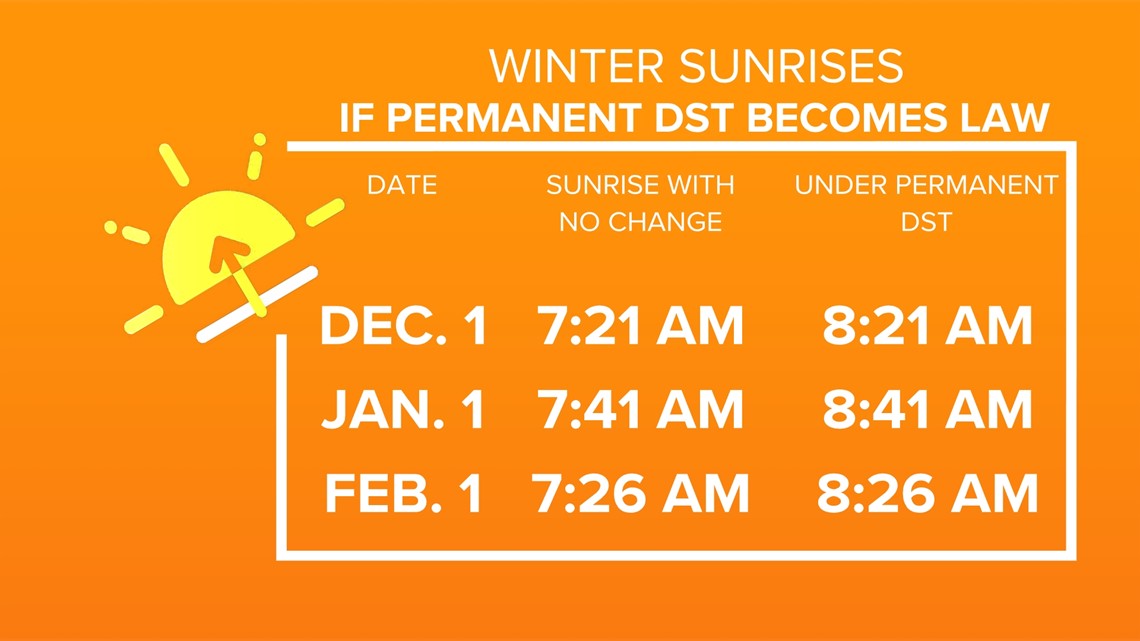DES MOINES, Iowa — In early 2022, the United States Senate passed the Sunshine Protection Act by unanimous support, a measure that would make daylight saving time permanent.
This occurred around the same time a bill passed the Iowa statehouse to keep the state permanently in daylight saving time, eliminating the need to "spring forward" or "fall back" every year.
However, there are still several steps needed before these measures are signed into law.
Since the U.S. recognizes daylight saving time from spring to fall, the sunrise and sunset times between early March and early November would not change.
But all sunrises and sunsets would move one hour later than their current times during the winter months should permanent daylight saving time become law.
For Des Moines, this means sunset during the harsh winter months would occur between 5 and 6 p.m. This would put an end to sunsets prior to 5 p.m., a welcome sight for those who deal with the winter blues year after year.
Of course, the not-so-sunny side to permanent daylight saving time is the later sunrises in the winter months.


If permanent daylight saving time were to become law, the sunrise would be 8:21 a.m. on Dec. 1, 8:41 a.m. on Jan. 1 and 8:26 a.m. on Feb. 1, respectively.
Time zones would not change, so there would still be a one-hour difference between the eastern time zone and the central time zone, for example.
If the U.S. House of Representatives were to pass the Sunshine Protection Act and then President Joe Biden signed it, the U.S. would fall back one final time in November 2022 and spring forward one final time in March 2023.

